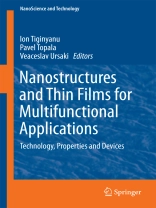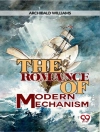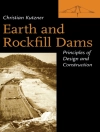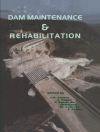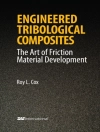This book is focused on recent advances in the development of thin films for photovoltaic applications, Ti O2/WO3 bi-layers for applications with enhanced photo-catalytic properties, nanometer oxide and hydroxide films for anticorrosive coatings, surface passivation in chemical industries, micro- and nanoelectronics, trilayers of metglas and lead free piezoelectrics for magnetic field sensors, current sensors, spintronics, microwave and read/write devices. Diluted ferromagnetic alloy films are also considered for superconducting spintronics based on superconducting spin-valves. Thermal properties of segmented nanowires are analyzed with respect to thermoelectric applications. Recent advances in template production of nanocomposites are also reviewed with particular focus on technologies for template assisted formation of metal nanotubes. Some elements related to abrasive flow machining (AFM), specifically state of the art elements of technological systems and construction of equipment are presented. The book is written for researchers in materials science, nanotechnologies, Ph D students and graduate student.
Mục lục
The study of thin films by electrochemical impedance spectroscopy.- Nanometer oxide and hydroxide pellicles by applying electrical discharges in impulse (EDI).- Graphite films deposited on metal surface by electrical discharge pulse.- Structural and physical properties of Zn SxSe1-x thin films.- Thin-film photovoltaic devices based on A2B6 compounds.- Theory of the anisotropic magnetoelectric effects in metglas-piezocrystal laminates.- Experimental studies of the direct and converse magnetoelectric effects in metglas-piezocrystal laminates.- Particularities of physical properties of semimagnetic semiconductors and their practical application.- Cobalt/cobaltoxide exchange bias system for diluted ferromagnetic alloy films in superconducting spin-valves.- Local ordering at the interface of the Ti O2-WO3 bi-layers.- Crystalline structure and surface morphology of AIIIBVI type lamellar semiconductor nanocomposites obtained by heat treatment in Cd and Zn vapor.- Optical and photoelectrical properties of Ga S, Ga Se, Ga Te and In Se semiconductors and nanocomposites obtained by heat treatment in Cd and Zn vapor.- Photoluminescence of nanocomposites obtained by heat treatment of Ga S, Ga Se, Ga Te and In Se single crystals in Cd and Zn vapor.- Nanoreliefs obtained by various manufacturing methods.- Template assisted formation of metal nanotubes.- Thermal conductivity of segmented nanowires.- THz devices based on carbon nanomaterials.- Abrasive flow machining.
Giới thiệu về tác giả
Ion Tiginyanu received his M.S. degree from the Moscow Institute of Physics and Engineering in 1978. He received his Ph.D. degree in Semiconductor Physics from Lebedev Institute of Physics, Academy of Sciences of U.S.S.R., in 1982, and his Doctor habilitate degree in 1991 from the Institute of Applied Physics of the Academy of Sciences of Moldova. He became full professor in 1993 at the Technical University of Moldova. From 1984 to 1998 he worked as senior researcher at the Institute of Applied Physics of the Academy of Sciences of Moldova. In 1998 he joined the Technical University of Moldova, being appointed vice-Rector, while in October 2004 he was elected vice-president of the Academy of Sciences of Moldova. He serves as Director of the National Center for Materials Study and Testing and Professor at the Chair of Microelectronics of the Technical University of Moldova. In 1995–96 and 1998-99 he has been a visiting professor at the Institute of High-Frequency Electronics of the Technical University Darmstadt, Germany, while in 2001 – at the Department of Electrical Engineering and Computer Science of the University of Michigan, USA. In March 2013 he was elected first vice-president of the Academy of Sciences of Moldova. Professor Tiginyanu’s research interests are related to nanotechnologies, 3D hybrid nanomaterials, ultrathin membranes, photonic crystals, random lasing, cost-effective solar cells and new sensor technologies. He has more than 300 journal publications and 52 technological patents, and edited 5 books in English. His personal Hirsch index equals 31. In 2011 he got the ‘Outstanding Inventor’ Award from the World Intellectual Property Organization. Along with this, over the last decade he received 17 Gold and Silver Awards at the International Exhibition “Eureka” (Brussels), International Exhibition of Inventions in Geneva and at the International Exhibition of Inventions and New Products in Pittsburgh (USA). He is member of the Academy of Sciences of Moldova, Honorary member of the Academy of Romanian Scientists (AOSR), senior member of SPIE, and member of the American Association for the Advancement of Science, IEEE, Optical Society of America, Materials Research Society and Electrochemical Society. He is a Honorary Doctor of the Joint Institute for Nuclear Research (Dubna, Russian Federation). He has about 300 scientific journal publications, 5 books in English and 52 technological patents. He got about 2900 citations to published papers (excluding self-citations) and has a Hirsch index: h = 31.
Pavel Topala received his M.S. degree from the Balti State University in 1980, his Ph.D. degree in Engineering from Politehnica University of Bucharest, Romania in 1993, and his Doctor habilitate degree from the Technical University of Moldova in 2008. He became full professor in 2009 at the Balti State University, Republic of Moldova. In the period from 1982 to 1984, and from 1994 to 2009 he worked as lecturer, associate professor, and head of the Technological Department at the Balti State University. Since 2010 he serves as dean of the Department of Exact, Economic and Environmental Sciences at the same university. He is also the head of the scientific laboratory „Micro- and nano-technologies”, head of the Interuniversity Center „Resonance nano-technologies”, member of the National Council of Accreditation and Attestation of the Republic of Moldova, head of subsidiary of the international association Mod Tech and Romanian Association for Non-conventional Technologies. He has been an invited professor at the University of Tokyo, Japan; at the University “A. I. Cuza” and University “Gh. Asachi” of Iasi, Romania; at the Silesian Technological University of Gliwice, Poland and University of Aveiro, Portugal. Professor Topala’s research interests are related to nanotechnologies, electric discharge machining, electro-erosion processing, plasma physics, coatings consisting of graphite and oxide nano-structures on metal surfaces. He is author of 5 monographs, more than 200 journal publications and 9 technological patents. He got 15 gold and silver awards at international exhibitions of inventions.
Veaceslav Ursaki received his M.S. degree from the Moscow Institute of Physics and Engineering in 1979 and his Ph.D. degree in Semiconductor Physics from Lebedev Institute of Physics, Academy of Sciences of U.S.S.R., in 1985. He received his Doctor habilitate degree in 1998 from the Institute of Applied Physics of the Academy of Sciences of Moldova. From 1986 to 2013 he worked as senior, leading, and principal researcher, consecutively, at the Institute of Applied Physics of the Academy of Sciences of Moldova. Since 2013 he serves as coordinator of the Department of Engineering and Technological Sciences of the Academy of Sciences of Moldova. He has been a visiting scientist at the Technical University Athens, Greece in 1996-1997; at the Technical University Darmstadt, Germany in 1998; and at the Max-Planck Institute for Solid State Research, Stuttgart, Germany in 2001. Doctor Ursaki’s research interests are related to pressure induced phase transitions in ternary and multinary compounds, materials science (III-V, II-VI and ternary compounds, radiation-hard materials, nanostructured materials and nanocomposites), electrical, optical and photoelectrical characterization of semiconductor materials and device structures, lasing effects in solid-state nanostructures, optoelectronic and photonic properties of nanostructures and nanocomposite materials. He has published more than 200 papers in Scopus database and 5 book chapters. He edited 3 books in English and has 30 technological patents. His personal Hirsch index equals 25. He won the Prize of the Academies of Sciences of Ukraine, Belarus and Moldova in 2013. He contributed to the realization of more than 10 international projects, including FP-7 MOLD-ERA Project in 2010-2013.
